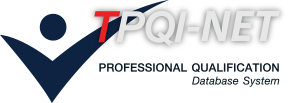หน่วยสมรรถนะ
Perform advanced troubleshooting in aircraft mechanical maintenance.
สาขาวิชาชีพการบิน
รายละเอียดหน่วยสมรรถนะ
| 1. รหัสหน่วยสมรรถนะ | AVT-FTN-5-056ZA |
| 2. ชื่อหน่วยสมรรถนะ | Perform advanced troubleshooting in aircraft mechanical maintenance. |
| 3. ทบทวนครั้งที่ | - / - |
| 4. สร้างใหม่ |
|
ปรับปรุง |
|
| 5. สำหรับชื่ออาชีพและรหัสอาชีพ (Occupational Classification) | |
|
|
|
| 6. คำอธิบายหน่วยสมรรถนะ (Description of Unit of Competency) | |
| This unit of competency requires the application of basic knowledge systems theory and diagnostic skills to identify advanced fault during the execution of scheduled maintenance or not the cause of defects in fixed and rotary wing aircraft which are -delà boundary fault diagnosis guides the maintenance manual. This can be achieved in individual activities or for monitoring other staff. | |
| 7. สำหรับระดับคุณวุฒิ |
| 1 | 2 | 3 | 4 | 5 | 6 | 7 | 8 |
|---|---|---|---|---|---|---|---|
| 8. กลุ่มอาชีพ (Sector) | |
| 7232 Aircraft Mechanics | |
| 9. ชื่ออาชีพและรหัสอาชีพอื่นที่หน่วยสมรรถนะนี้สามารถใช้ได้ (ถ้ามี) | |
| N/A | |
| 10. ข้อกำหนดหรือกฎระเบียบที่เกี่ยวข้อง (Licensing or Regulation Related) (ถ้ามี) | |
| N/A | |
| 11. สมรรถนะย่อยและเกณฑ์การปฏิบัติงาน (Elements and Performance Criteria) |
| หน่วยสมรรถนะย่อย (EOC) | เกณฑ์ในการปฏิบัติงาน (Performance Criteria) | รหัส PC (ตามเล่มมาตรฐาน) |
รหัส PC (จากระบบ) |
|---|---|---|---|
| 101509.01 Verify the defect. | 101509.01.01 Available information from flight crew, such as flightphase, aircraft configuration, and so on; maintenance documentation bothcurrent and previous history; is used as necessary, to assist in faultdetermination. Inspection of the affected system iscarried out to check both physical integrity and correct operation. | 101509.01.01 | 71173 |
| 101509.01 Verify the defect. | 101509.01.02 Information gainedfrom Central Maintenance. Systems is verified againstphysical integrity and correct operation, where applicable, while observing,all relevant work health and safety (WHS) requirements. | 101509.01.02 | 71174 |
| 101509.02 Isolate the defect. | 101509.02.01 Logical processes, including the application of basicprinciples and system knowledge and known facts, are used to augmentmaintenance manual fault diagnosis guides to ensure efficient and accuratetroubleshooting | 101509.02.01 | 71175 |
| 101509.02 Isolate the defect. | 101509.02.02 Specialist advice isobtained, where required and/or available, to assistwith the troubleshooting process, and faults are located and the causes of thedefects are clearly identified and correctly recorded in maintenancedocumentation, including any other systems disturbed, where required | 101509.02.02 | 71176 |
| 101509.03 Determine defect rectification requirements. | 101509.03.01 Defect rectification requirements are determined and thenecessary repair action initiated once verification and isolation of thedefect are confirmed. | 101509.03.01 | 71177 |
| 101509.04 Verify defect rectification. | 101509.04.01 Defect is rectified in accordance with approvedmaintenance data, and all systems disturbed or accessed during troubleshootingare restored, as applicable, using maintenance | 101509.04.01 | 71178 |
| 101509.04 Verify defect rectification. | 101509.04.02 Manuals, repairschemes or approved maintenance data while observing relevant WHS procedures. All checks required by approved maintenance data to ensurecorrect operation of all disturbed systems are performed. | 101509.04.02 | 71179 |
| 12. ความรู้และทักษะก่อนหน้าที่จำเป็น (Pre-requisite Skill & Knowledge) | |
| N/A | |
| 13. ทักษะและความรู้ที่ต้องการ (Required Skills and Knowledge) | |
|
(ก) ความต้องการด้านทักษะ N/A(ข) ความต้องการด้านความรู้ N/A |
|
| 14. หลักฐานที่ต้องการ (Evidence Guide) | |
|
• condition monitoring and trend analysis techniques. |
|
| 15. ขอบเขต (Range Statement) | |
|
Propeller and rotor systems |
|
| 16. หน่วยสมรรถนะร่วม (ถ้ามี) | |
| N/A | |
| 17. อุตสาหกรรมร่วม/กลุ่มอาชีพร่วม (ถ้ามี) | |
| N/A | |
| 18. รายละเอียดกระบวนการและวิธีการประเมิน (Assessment Description and Procedure) | |
|
|
|
